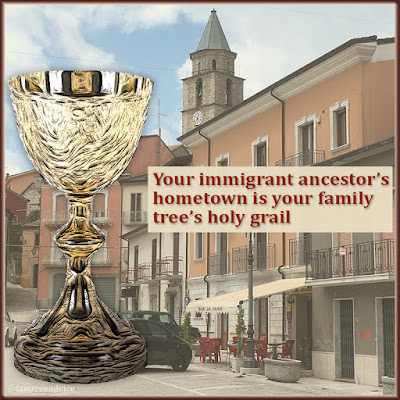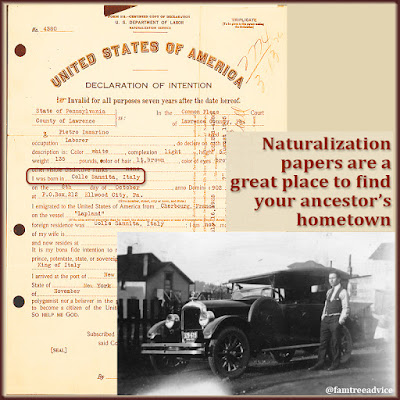Some dead ends are more important than others when a DNA connection is missing.
Despite some juicy leads, I still don't know why my parents share some DNA. They have a distant cousin relationship that I can't nail down. So let's try something else.
Recently I wrote about How to Diagram a Mystery DNA Match. It was a new technique that worked incredibly well on my first try. So why not try it on my parents?
I chose one parent's DNA test and found the other parent in the match list. I clicked to see all the possible relationships for 2 people who share 37 centimorgans. In my relationship calculator spreadsheet, I highlighted these possible relationships.
I know the names of all my father's 3rd great grandparents. I'm missing 8 of my mother's 3rd great grandparents due to a lack of records from their hometown. With so many ancestors known, I was able to rule out all the most likely relationships.
 |
| Mom's maternal side still has a lot of missing ancestors, some of which I may yet find. |
But my parents may have a half-cousin relationship. What if one of his 3rd or 4th great grandparents married one of her 3rd or 4th great grandparents? I know my Italian ancestors didn't stay widowed for long. They would remarry for help raising the children or for companionship.
I went through my parents' ancestors looking for those I knew had more than one marriage. I kept noticing all the missing ancestors and wondering about them.
I have to keep working on my under-explored towns:
- Apice and Santa Paolina on Mom's side
- Pesco Sannita and Circello on Dad's side
Each one of their towns is pretty close to the others.
Can I fill in more holes in my family tree? Will any new paths lead to my other parent's ancestral hometowns?
I thought it might help to check the Relationship Calculator in Family Tree Maker. It might tell me where to start searching.
I clicked on Dad and checked his relationship to Mom. Besides "husband", I found these relationships:
- Dad is the nephew of the wife of the 2nd cousin once removed of the wife of the 2nd cousin of Mom
- Dad is the nephew of the wife of the 4th cousin once removed of the brother-in-law of Mom
- Dad is the half 1st cousin 3 times removed of the wife of the 2nd cousin once removed of the brother-in-law of Mom
- Dad is the grand nephew of the wife of the half grand nephew of the wife of the nephew of the husband of the 2nd great aunt of Mom
- Dad is the nephew of the wife of the 1st great grand nephew of the wife of the 1st cousins of the husband of the half 1st great aunt of Mom
Well, that's clear, isn't it? I checked Family Tree Maker's relationship chart for each of the 5 relationships to make sense of it.
 |
| The Relationship Calculator in Family Tree Maker shows you hidden relationships. |
Here's what jumps out at me:
- Relationship 1 hinges on a marriage between Mom's paternal hometown (Baselice) and Dad's paternal hometown (Colle Sannita). But that marriage happened only a few years before my parents were born.
- Relationships 2 and 3 above end with the brother-in-law of Mom. That's my Uncle Kenny—my aunt's husband. Other DNA relationships point to a blood relationship between Uncle Kenny and me. I haven't figured it out, but here it is again.
- Relationships 4 and 5 above also include marriages between the 2 towns. These marriages happened in the 1830s and 1850s.
I'm always on the lookout for marriages between my 2 grandfathers' towns. The marriage in relationship #4 includes the last name Pozzuto. All my roads seem to lead to Pozzuto. I found this out when I did some DNA mapping using the Leeds Method. My parents share DNA matches with a high percentage of Pozzuto, and a heapin' helpin' of Zeolla.
So, what does all that analysis tell me to do? Keep working on dead ends in specific areas of my family tree. I'll start by exploring those 2 inter-town marriages. I'll also work on some other towns, searching for Mom's missing ancestors.
I know that any new relationships I add along the way may connect me to more DNA matches.
Do you have DNA mysteries you can't solve? Spend time researching the common branches. Or concentrate on particular last names. Fill in as many blanks as possible.
It's a never-ending journey. But when you love genealogy, the journey is what makes it fun.



















